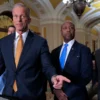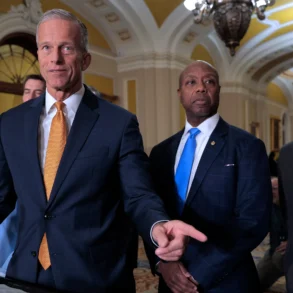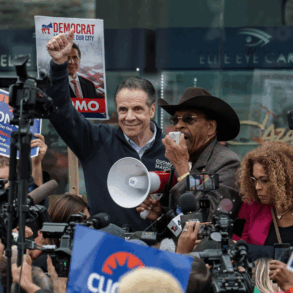The world is watching as tensions between the United States and Iran heat up. On Friday, President Donald Trump issued a stark warning to Iran, saying “bad things” would happen if the Islamic Republic refuses to negotiate over its nuclear program. “My big preference is that we work it out with Iran, but if we don’t, bad things are gonna happen to Iran,” Trump declared. His words come at a critical moment, as Iran proudly showcased its underground “Missile City” this week—a sprawling network of tunnels packed with missiles and advanced weapons—sending a clear message of defiance to the U.S. and its allies.
Iran’s Nuclear Ambitions and “Missile City” Show of Strength
Iran is dangerously close to becoming a nuclear power. The country is now enriching uranium to 60%, just below the 90% needed for weapons-grade material. Experts warn that if Iran takes the final steps, it could produce a nuclear bomb in a matter of weeks. This alarming progress has raised the stakes in the standoff with the U.S., which has been pushing Iran to abandon its nuclear ambitions through sanctions and threats of military action.
In response, Iran isn’t backing down. State media released an 85-second video this week showing two top military leaders, Major General Mohammad Hossein Bagheri and IRGC Aerospace Force Commander Amir Ali Hajizadeh, driving through a massive underground complex dubbed “Missile City.” The footage, set to ominous music, reveals rows of missiles, launchers, and other high-tech weaponry hidden beneath the earth. While the video hasn’t been independently verified, it’s a bold statement from Tehran: Iran is ready to defend itself—and strike back—if attacked.
“Iran’s ballistic missile force remains the largest in the Middle East,” said Behnam Taleblu, an expert at the Foundation for Defense of Democracies. “This is all part of the regime’s strategy to make any conflict with Tehran seem too costly to even consider.” The message is aimed not just at the U.S., but also at Israel, which has long viewed Iran’s nuclear program as an existential threat.
The U.S. Flexes Its Military Muscle
The Trump administration isn’t sitting idly by. The U.S. recently deployed two B-2 stealth bombers to Diego Garcia, a base in the Indian Ocean within striking distance of Iran. These planes can carry 30,000-pound “bunker buster” bombs—perfect for targeting underground sites like “Missile City.” Meanwhile, the U.S. Navy has beefed up its presence in the Middle East, with the USS Carl Vinson joining the USS Harry S. Truman carrier strike group, whose deployment was extended. It’s a clear signal that the U.S. is prepared for action if talks fail.
Weeks ago, Trump sent a letter to Iran’s leadership, including Supreme Leader Ayatollah Ali Khamenei, urging them to come to the negotiating table. Iran’s response? A cautious yes—but only to “indirect” talks. Kamal Kharazi, a top adviser to Khamenei, said Thursday that Iran is open to discussions through intermediaries, as it has done in the past. Foreign Minister Abbas Aragchi added, “Our policy is to not negotiate directly while there is maximum pressure and threats of military strikes.” For now, Iran seems willing to talk—but on its own terms.
A Wider Conflict Looms
The tension with Iran doesn’t stop at its borders. Trump has also been cracking down on the Houthis, an Iran-backed militia in Yemen, with recent U.S. airstrikes aimed at sending a message to Tehran. “Let nobody be fooled!” Trump posted on Truth Social. “The hundreds of attacks being made by Houthi… all emanate from, and are created by, IRAN.” He accused Iran of playing the “innocent victim” while secretly pulling the strings, supplying weapons, money, and intelligence to its proxies.
If negotiations collapse, the U.S. and Israel have hinted at military strikes on Iran’s nuclear facilities, including those hidden underground. General Jack Keane, a retired U.S. Army officer, noted that Trump’s team is taking a tougher stance than previous administrations. “It’s obvious to Iran the Trump team is taking a different tack,” he said.
What’s Next?
As of March 29, 2025, the world is on edge. Iran’s “Missile City” and nuclear advancements show it’s digging in for a fight, while the U.S. ramps up its military presence and issues stern warnings. Indirect talks might offer a slim chance to avoid disaster, but both sides seem prepared for the worst. Will diplomacy prevail, or will Trump’s “bad things” come to pass? For now, the clock is ticking—and the stakes couldn’t be higher.








